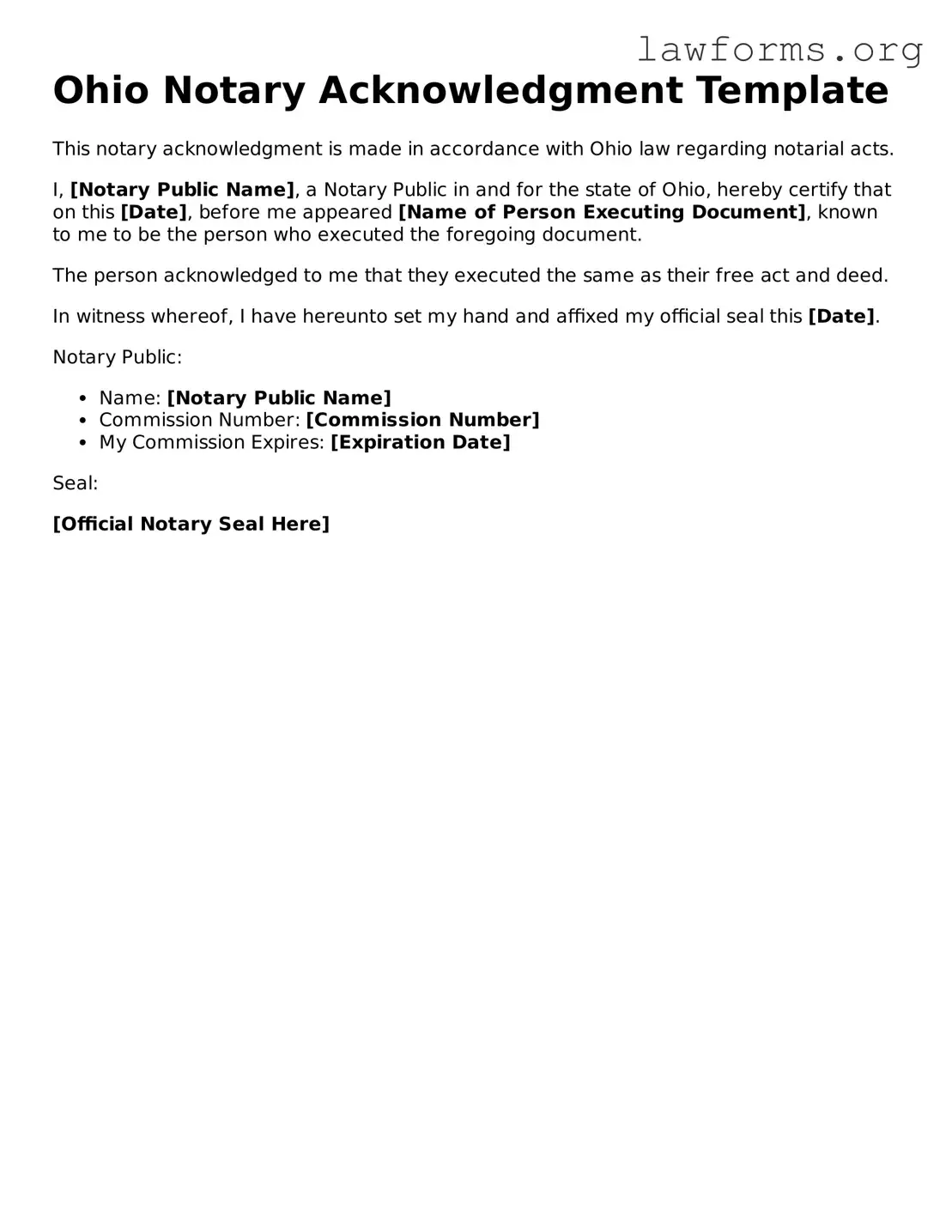Attorney-Approved Notary Acknowledgement Template for the State of Ohio
The Ohio Notary Acknowledgement form is a legal document used to verify the identity of individuals signing a document. This form serves an important purpose in ensuring that signatures are authentic and that the signers are acting voluntarily. If you need to complete this form, please click the button below to get started.
Customize Document Online
